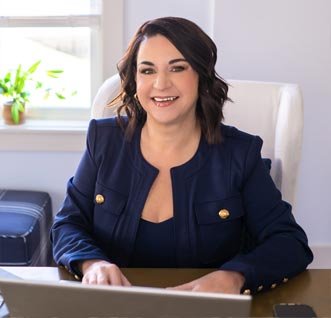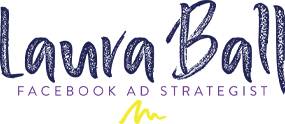In today's digital age, running Facebook ads has become a crucial strategy for businesses to reach their target audience, increase brand awareness, and drive sales. However, with the constantly evolving platform and algorithms, (UGGH!) it's essential to have a well-structured approach to ensure your Facebook ad campaigns deliver the desired results. In this blog post, we'll provide you with a concise yet comprehensive five-step guide to running effective Facebook ads.
Step 1: Create your offer
What is the ad offering your audience? Are you trying to get brand awareness? More podcast downloads? Giving away a free lead magnet in order to grow your email list? Let’s talk about a lead magnet ad for a minute. Do you have one? Is there something you can give away for free in exchange for a name and email that gives your ideal client a quick win BUT leaves them needing a little bit more help to get to the next level?
Think about your offer and test it. Test several to see what your audience most wants. While brainstorming, think of a question you get asked ALL the time. For me, my clients ask about the Facebook pixel so a great lead magnet for me might be what the Facebook pixel is, what it does and why it’s important to have it on your website. Give them the ‘what’ not the ‘how to’. (hint: SELL the ‘how to”
Step 2: Define Your Goals
Before diving into the intricacies of Facebook ads, it's crucial to clearly define your goals. Do you want to generate leads, increase sales, boost website traffic, or enhance brand visibility? By knowing what the goal of the ad is will allow you to select the right ad objective inside Ads Manager. If you want people to opt into your ads, make sure you select conversions or leads as the objective (not ‘traffic’). We want to find people within your audience who are going to convert. Not just leave Facebook to consume content (which is the ‘traffic’ objective).
Step 3: Craft Engaging and Compelling Ads
The success of your Facebook ad campaign hinges on creating engaging and compelling ad content. Start by selecting the appropriate ad format, such as image ads, video ads, carousel ads, or collection ads, depending on your campaign goals.
Make sure your ad content is visually appealing, concise, and relevant to your target audience. Include a captivating headline, persuasive copy, and a clear call-to-action (CTA) to prompt users to take the desired action. You’re looking for strong click through rates. I always look at the CTR LINK metric inside ads manager. We want this to be over 1%. That means people are clicking on the ad and going to see what the landing page has to offer!
Step 4: Implement Effective Targeting and Optimization Strategies
Identify your target audience. Facebook offers a wide range of targeting options, including demographics, interests, behaviors, and more. Understanding your audience's characteristics and preferences allows you to create highly targeted ads that resonate with them.
Additionally, utilize the power of Facebook Pixel—a small piece of code that you can add to your website—to track conversions, optimize your ads, and retarget website visitors. It enables you to measure the effectiveness of your campaigns and make data-driven decisions to improve performance. Make SURE the pixel code is on all pages of your website - especially any ‘success’ or ‘thank you’ pages.
Step 5: Monitor, Analyze, and Optimize Your Campaigns
Once your Facebook ad campaigns are live, closely monitor their performance using Facebook's reporting tools. Keep an eye on the metric that aligns most with the goal of your ad. If you are optimizing ads to get the lead - look at the “Cost Per Lead” or Cost Per Result” If you are optimizing the ad for purchases - look at the number of sales you're getting and the cost per purchase. Key metrics like CTR (click-through rates) and landing page conversion rates allow you to troubleshoot what might be wrong with an ad if you’re not hitting your KPIs (key performance indicators) like sales or leads. Analyze the data to identify trends, patterns, and areas of improvement.
Based on the insights gained, make data-driven decisions and optimizations to your campaigns. Adjust your targeting, ad placements, budgets, landing page content, and creative elements to improve overall performance and achieve better results. Regularly testing and refining your ads will help you optimize your campaigns over time.
Running Facebook ads can be a highly effective way to achieve your marketing goals. By following this five-step guide—determining your offer, defining your goals, crafting engaging ads, implementing effective targeting and monitoring and optimizing your campaigns—you'll be well on your way to running successful Facebook ad campaigns. Remember, consistency, creativity, and data-driven decision-making are the keys to unlocking the true potential of Facebook advertising.

























